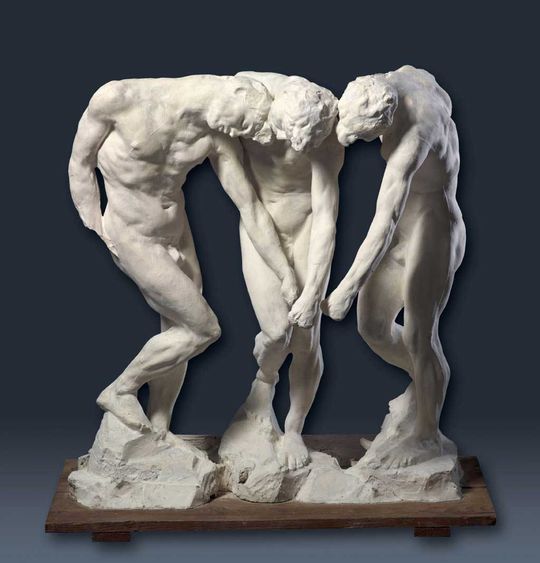the Three Shadows
circa 1885

Original Plaster sculpture
D. 14-4-1
Allocated by the French state (Fonds national d’art contemporain) in 1914
H. 97 cm - L. 92 cm - P. 40 cm
Rodin worked on a figure of Adam from 1878. Then, in 1886, working on the monumental project of la Porte de l’Enfer (the Gates of Hell), he came up with the ideal of multiplying this sculpture by three and using the group to crown the work. The three men became les Trois Ombres (the Three Shadows), representing the souls of the damned. After 1889, Rodin abandoned his monumental project because of difficulties with installation. But he continued to work selectively on certain models as with this plaster cast, in which he studies different arrangements for the three sculptures.
the Three Shadows
circa 1885

Original Plaster sculpture
D. 14-4-1
Allocated by the French state (Fonds national d’art contemporain) in 1914
H. 97 cm - L. 92 cm - P. 40 cm
Rodin worked on a figure of Adam from 1878. Then, in 1886, working on the monumental project of la Porte de l’Enfer (the Gates of Hell), he came up with the ideal of multiplying this sculpture by three and using the group to crown the work. The three men became les Trois Ombres (the Three Shadows), representing the souls of the damned. After 1889, Rodin abandoned his monumental project because of difficulties with installation. But he continued to work selectively on certain models as with this plaster cast, in which he studies different arrangements for the three sculptures.
